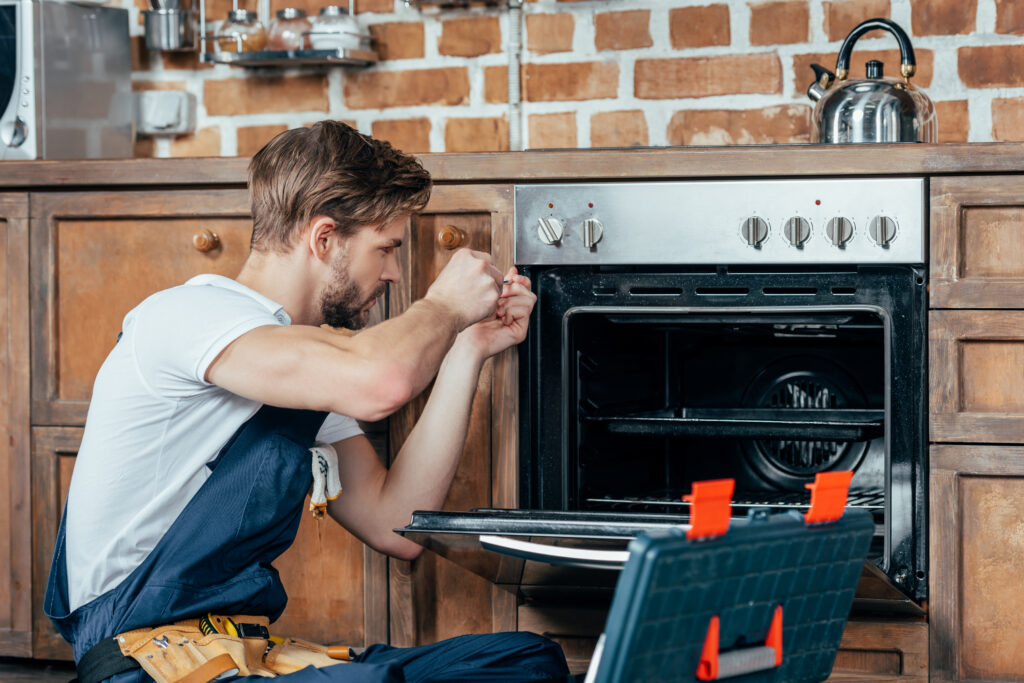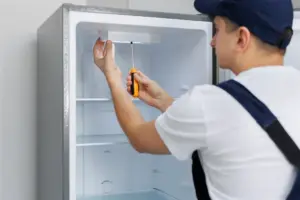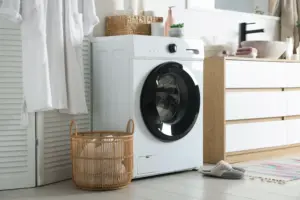In a typical kitchen, the oven is a central appliance used for baking, roasting, and sometimes broiling. Understanding where the oven is located and the various configurations available can help homeowners maximize their kitchen’s functionality and efficiency. This article will explore the different types of ovens, their common placements in kitchens, and tips for optimizing their use. We also discuss the most important point, where is the oven in your kitchen.
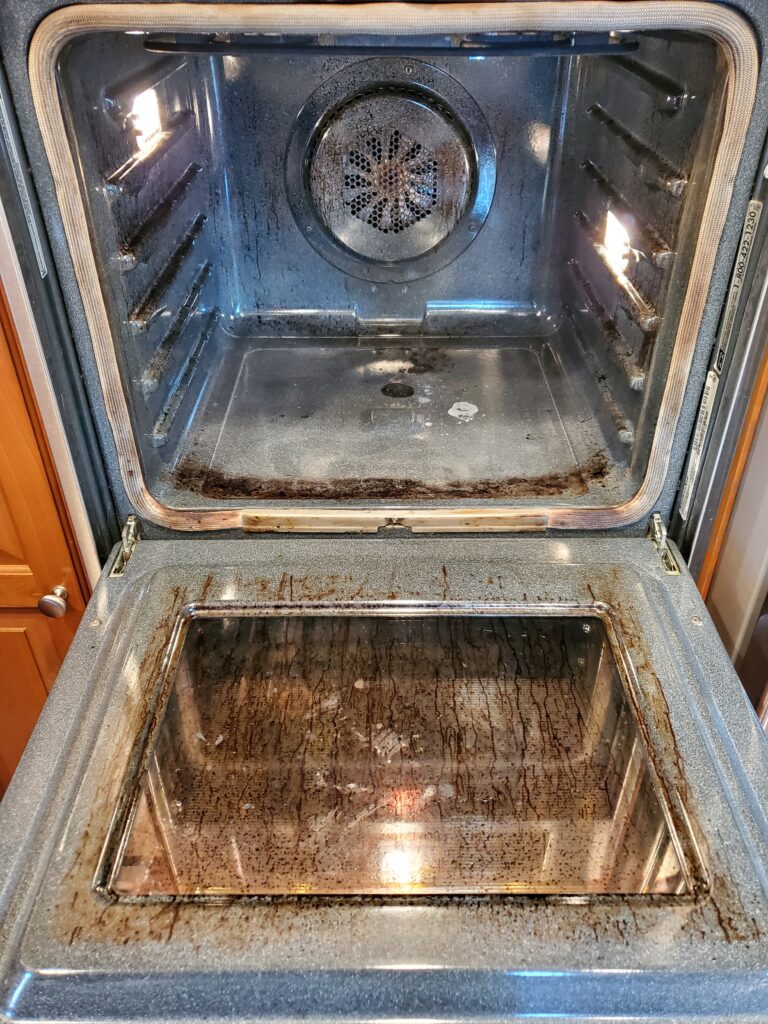
Types of Ovens and Their Locations
Ovens come in various types, each with distinct features and typical placements within the kitchen:
1. Freestanding Ovens:
Freestanding ovens, also known as range ovens, combine an oven and a cooktop in one unit. They are usually placed between cabinets or at the end of a counter. These ovens are versatile and easy to install, as they only require an electrical outlet and, for gas models, a gas line.
2. Wall Ovens:
Wall ovens are built into the cabinetry, separate from the cooktop. They are typically installed at eye level, making it easier to monitor and access dishes without bending. Wall ovens can be single or double units, offering additional cooking space and flexibility. Common locations for wall ovens include:
- Adjacent to the cooktop for convenience
- Within a wall of cabinets for a seamless look
- Stacked vertically with another wall oven or microwave
3. Under-Counter Ovens:
These ovens are installed beneath the countertop, often under a cooktop or kitchen island. Under-counter ovens are ideal for kitchens with limited space or for creating a sleek, modern look. They are accessible and practical, especially in open-concept kitchens.
4. Slide-In Ovens:
Slide-in ovens, similar to freestanding ovens, are designed to fit between cabinets but offer a more integrated look. They lack the backguard typically found on freestanding models, allowing for a seamless appearance with the countertop and backsplash.
5. Combination Ovens:
Combination ovens feature multiple cooking functions in one unit, such as an oven with a built-in microwave or steam oven. These are often installed in wall cabinets or as part of a built-in appliance wall to maximize kitchen space and efficiency.
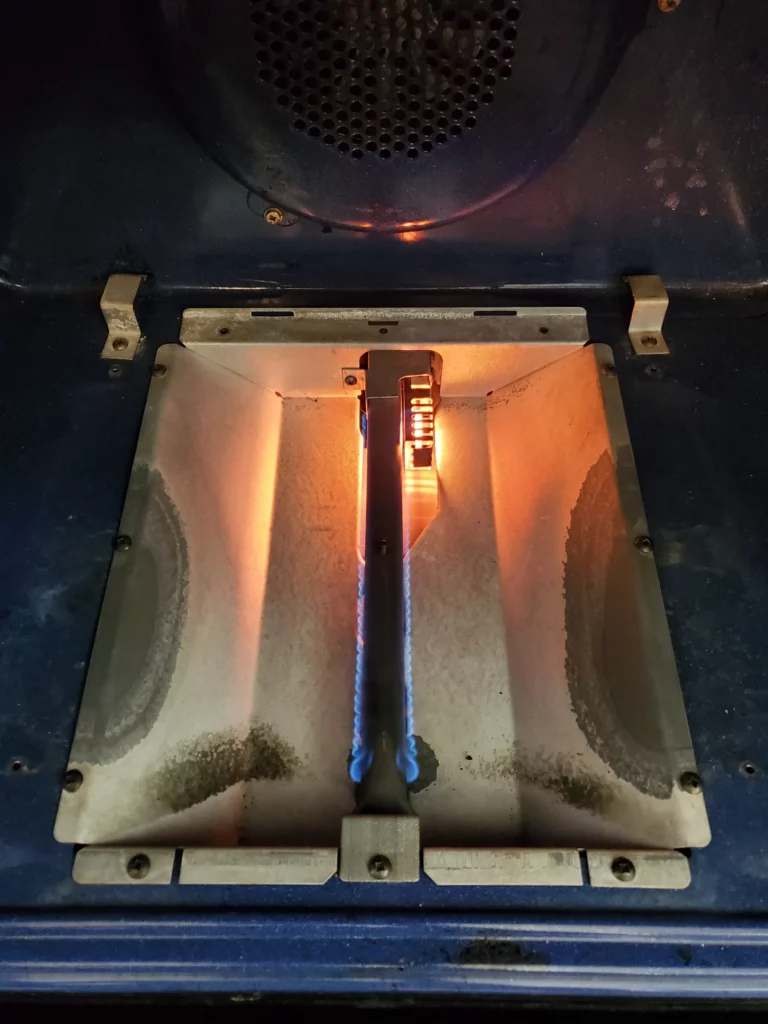
Factors Influencing Oven Placement
Several factors influence where an oven is placed in a kitchen, including kitchen layout, functionality, safety, and personal preferences.
1. Kitchen Layout:
The kitchen layout plays a significant role in determining the best location for the oven. Common kitchen layouts include:
- L-Shaped: In an L-shaped kitchen, the oven is typically placed along one of the longer walls, often adjacent to the cooktop for convenience.
- U-Shaped: In a U-shaped kitchen, the oven can be placed at the end of one of the U’s arms or in the middle section, depending on the overall design and workflow.
- Galley: In a galley kitchen, the oven is usually placed along one of the parallel walls, with the cooktop often located on the opposite wall for efficient movement.
- Island: In kitchens with an island, the oven can be integrated into the island itself, providing a central location that’s easily accessible from all sides.
2. Functionality:
For optimal functionality, the oven should be located where it’s most convenient for cooking and food preparation. Considerations include:
- Proximity to Cooktop: Placing the oven near the cooktop allows for easy transfer of pots and pans between the two appliances.
- Counter Space: Ensuring ample counter space nearby is essential for placing hot dishes, baking sheets, and other items as they come out of the oven.
- Work Triangle: The classic kitchen work triangle concept involves placing the oven, sink, and refrigerator in a triangular layout for efficient movement between these key areas.
3. Safety:
Safety is a crucial consideration when deciding where to place the oven. Key safety factors include:
- Heat Sources: Avoid placing the oven near heat-sensitive appliances or materials that could be damaged by high temperatures.
- Child Safety: If there are young children in the household, consider installing the oven at a height or location that minimizes the risk of accidental burns or injuries.
- Ventilation: Proper ventilation is essential to dissipate heat and odors generated during cooking. Ensure that the oven is placed in a well-ventilated area or has an appropriate exhaust system.
4. Personal Preferences:
Personal preferences and lifestyle habits also play a role in oven placement. Some considerations include:
- Cooking Habits: For those who bake frequently, having the oven at eye level or within easy reach can enhance the cooking experience.
- Entertaining: If the kitchen is used for entertaining, placing the oven in a central, accessible location can facilitate serving and socializing.
- Aesthetics: The visual appeal of the kitchen is important to many homeowners. Integrating the oven into the cabinetry or creating a built-in appliance wall can contribute to a cohesive and stylish kitchen design.
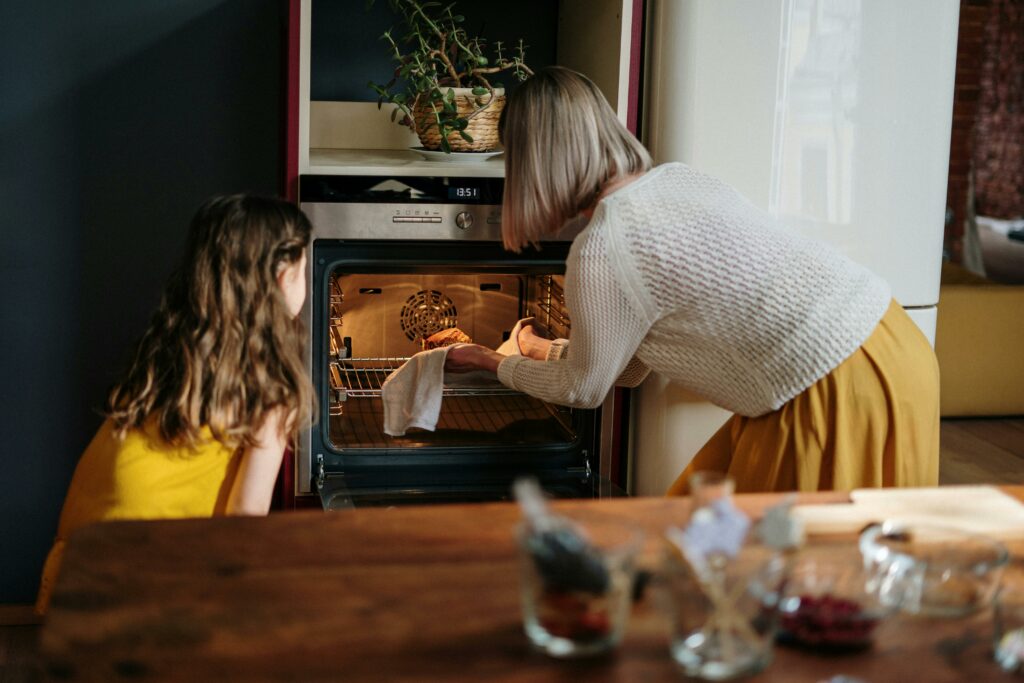
Tips for Optimizing Oven Use and Placement
To make the most of your oven’s placement and functionality, consider the following tips:
1. Plan for Adequate Clearance:
Ensure there is sufficient clearance around the oven for safe operation and easy access. This includes space for the oven door to open fully and room for maneuvering while placing or removing dishes.
2. Prioritize Ventilation:
Good ventilation is essential to maintain a comfortable kitchen environment and prevent the buildup of heat and odors. Install an appropriate range hood or exhaust fan to keep the kitchen air clean and fresh.
3. Utilize Adjacent Storage:
Having storage for baking sheets, pans, and other oven-related accessories nearby can enhance convenience and organization. Consider installing pull-out shelves, drawers, or cabinets adjacent to the oven.
4. Consider Double Ovens:
For avid cooks or large households, double ovens can provide additional cooking capacity and flexibility. They allow for cooking multiple dishes at different temperatures simultaneously, which can be especially useful during holidays or large gatherings.
5. Integrate Smart Technology:
Modern ovens often come with smart features that enhance convenience and control. Consider models with Wi-Fi connectivity, remote monitoring, and programmable settings to streamline your cooking process.
6. Regular Maintenance:
Regularly clean and maintain your oven to ensure it operates efficiently and has a long lifespan. This includes cleaning the interior, checking seals, and ensuring that all components are in good working condition.
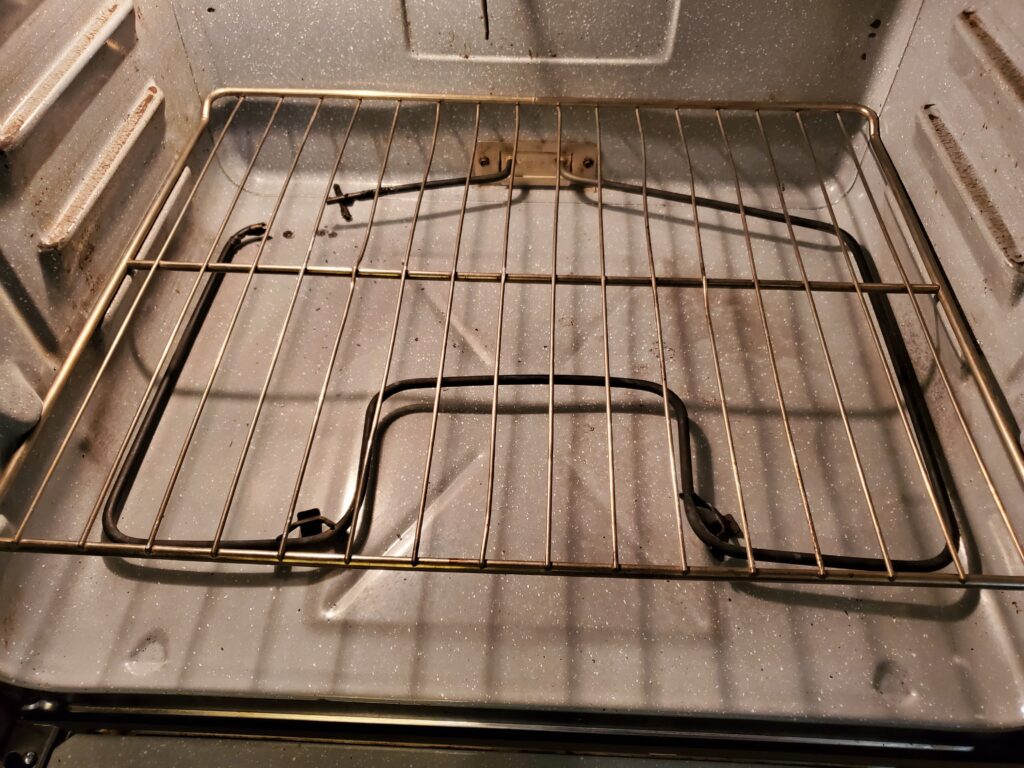
Conclusion
In conclusion, the placement of the oven in a kitchen is influenced by various factors, including the type of oven, kitchen layout, functionality, safety considerations, and personal preferences. By understanding these factors and planning accordingly, homeowners can optimize their kitchen space and enhance their cooking experience. Whether you choose a freestanding, wall, under-counter, slide-in, or combination oven, thoughtful placement and maintenance can ensure your oven serves you well for years to come.
When it comes to oven service, give us a call today for a professional quote.

